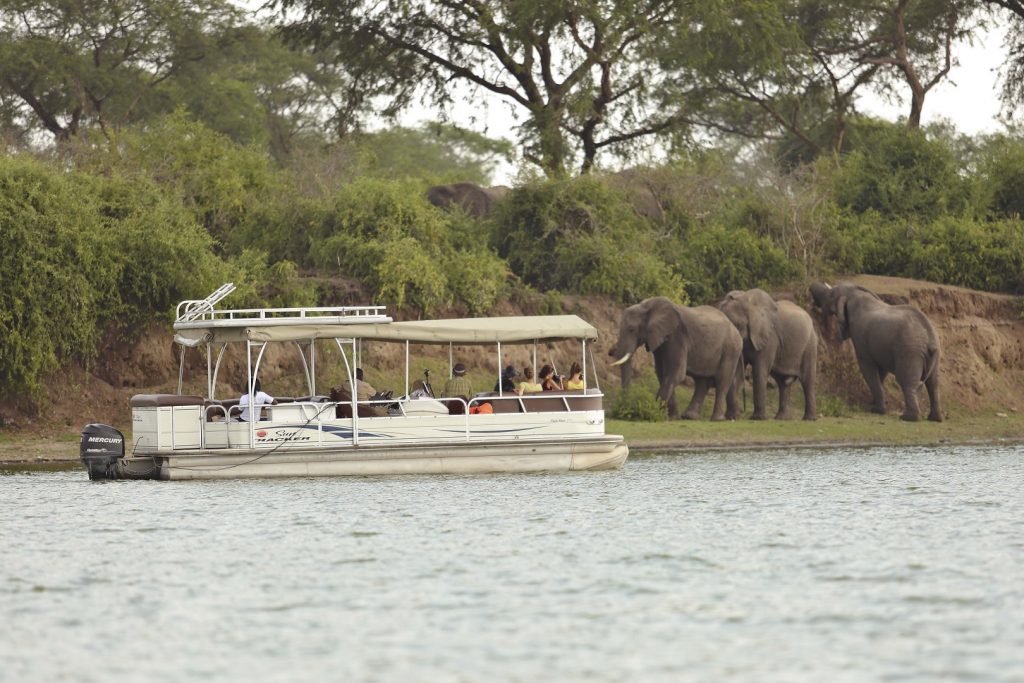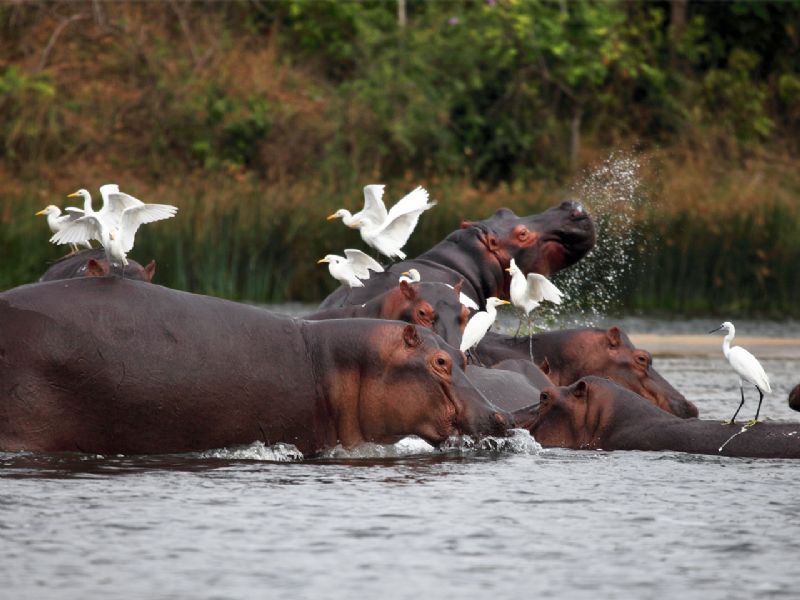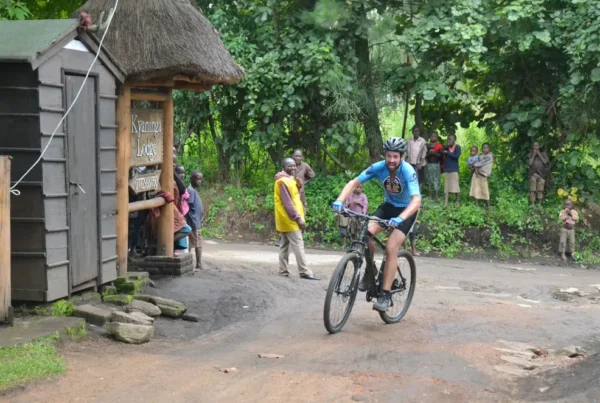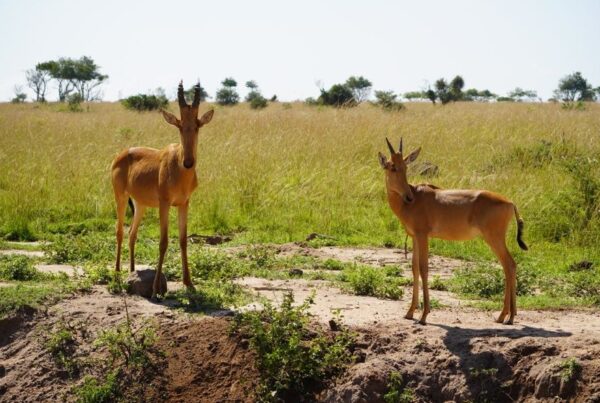Kazinga Channel Boat Safari: Wildlife Encounters in Queen Elizabeth
Where Water Meets Wilderness
There are places in Africa where the wilderness speaks in whispers, and there are places where it roars with life. In Queen Elizabeth National Park, nestled between Lake George and Lake Edward, lies one such place where water and wildlife converge in a breathtaking display of nature’s abundance. This is the Kazinga Channel, a natural waterway stretching about forty kilometers, where the pulse of Uganda’s most celebrated national park beats strongest. To set foot on a boat safari here is to experience one of the most extraordinary wildlife encounters in East Africa, a theater of nature where every bend of the channel reveals another spectacle.
A boat safari along the Kazinga Channel is not just a leisurely excursion; it is an immersion into the very essence of African wilderness. The rhythmic splashes of hippos, the stately march of elephants to the water’s edge, the sudden flutter of wings as a fish eagle soars overhead—these moments capture the channel’s vibrancy. While game drives across the park’s plains offer sweeping vistas of savannah life, the Kazinga Channel provides something more intimate: a close-up view of creatures in their element, bound by water, survival, and timeless instinct.
This guide delves into the marvels of the Kazinga Channel boat safari, exploring its geography, the astonishing variety of wildlife it supports, its cultural and ecological significance, and the reasons why it stands as one of Uganda’s most unmissable safari experiences.
The Geography of the Kazinga Channel
The Kazinga Channel is a natural link between Lake George in the east and Lake Edward in the west, forming part of the vast Albertine Rift Valley system. Its waters stretch for nearly forty kilometers, cutting through the heart of Queen Elizabeth National Park. To the north, Lake George receives its waters from streams flowing down the Rwenzori Mountains, also called the “Mountains of the Moon.” From here, the waters empty into the channel, which then flows westward into Lake Edward, one of Africa’s great freshwater bodies.
This geographical connection is not merely a hydrological feature but a lifeline for countless species. The channel and its adjoining lakes sustain one of the highest concentrations of hippos in the world, alongside vast numbers of crocodiles, elephants, and water birds. Its banks are fringed with papyrus swamps, lush vegetation, and savannah grasslands, creating a patchwork of habitats that attract both resident and migratory wildlife.
From a geological perspective, the Kazinga Channel’s creation is linked to the tectonic shifts that formed the Albertine Rift, part of the East African Rift Valley system. These ancient forces carved out a landscape of lakes, craters, and escarpments, within which the channel serves as a vital artery of life.
Historical and Cultural Significance
The Kazinga Channel has long been central not only to wildlife but also to human settlement. Local fishing communities have thrived along its shores for centuries, particularly around Katwe, a village renowned for its traditional salt mining practices. The salt pans near Lake Katwe, located just north of the channel, have sustained livelihoods for generations, demonstrating the intricate balance between human activity and natural resources.
Colonial explorers who ventured into Uganda during the late nineteenth and early twentieth centuries often described the channel in glowing terms, captivated by its wildlife spectacle. Over time, as Uganda developed its tourism infrastructure, the channel became one of the highlights of Queen Elizabeth National Park, drawing international recognition. Today, it remains a vital symbol of the park’s ecological wealth and a centerpiece of its safari experience.
Wildlife Encounters on the Kazinga Channel
Hippos: The Lords of the Waters
The hippopotamus reigns supreme in the Kazinga Channel. It is estimated that thousands of these massive animals inhabit the channel, making it one of the densest hippo populations anywhere in Africa. During the day, they spend most of their time submerged in the water, surfacing periodically to breathe, snort, and interact. By night, they emerge from the water to graze along the banks, leaving clear trails through the grasslands.
To watch a pod of hippos during a boat safari is to witness both tranquility and raw power. They appear calm, even comical, as they wallow side by side, but a sudden territorial display can transform the water into a churning battlefield. Their dominance in the channel underscores the crucial role of aquatic life in shaping the park’s ecosystems.
Nile Crocodiles: The Silent Predators
Sharing the channel with hippos are the formidable Nile crocodiles, whose prehistoric presence adds a sense of danger and awe to the safari. These reptiles can be seen basking along the shores, their armored bodies gleaming in the sun. At times, they slip silently into the water, vanishing with only their eyes and nostrils visible as they await unsuspecting prey.
Crocodiles are integral to the channel’s ecological balance, preying on fish, birds, and occasionally animals that venture too close to the water. Their interactions with hippos, elephants, and antelopes provide unforgettable scenes for safari-goers.
Elephants and Buffaloes: Gentle Giants of the Shore
The channel’s banks are a magnet for large mammals. Herds of African elephants can often be seen descending to the water’s edge, their trunks scooping up water in graceful arcs. Watching entire families drink, bathe, and play in the shallows is among the most cherished sights of the safari.
Similarly, large herds of buffaloes are drawn to the channel, particularly during the dry season when water elsewhere is scarce. Their sheer numbers and imposing presence create a powerful spectacle that reinforces the channel’s status as a wildlife hotspot.
Antelopes and Other Grazers
The plains surrounding the channel are dotted with Uganda kobs, waterbucks, and topis, all of which rely on the water for survival. Their presence also ensures that predators remain close, creating a dynamic landscape where prey and predator interactions are part of the daily rhythm.
Birdlife: A Paradise for Ornithologists
For bird enthusiasts, the Kazinga Channel is nothing short of paradise. Over 600 bird species are recorded in Queen Elizabeth National Park, many of which can be spotted along the channel. Iconic species include the African fish eagle, often seen swooping down to snatch fish with remarkable precision. The great white pelican, cormorants, kingfishers, and yellow-billed storks are a common sight.
Seasonal migratory birds, arriving from as far as Europe and Asia, add to the channel’s avian diversity, making it a year-round birdwatching haven. The symphony of calls, the flash of colors, and the graceful movements of these birds enrich the safari experience immeasurably.
The Boat Safari Experience
A boat safari on the Kazinga Channel is a journey into the heart of wild Africa. Unlike game drives that unfold across open landscapes, the boat cruise provides a unique perspective where animals come to the water rather than the traveler seeking them. The slow, deliberate pace of the boat allows for close observation, photography, and quiet reflection.
Most boat safaris last between two to three hours and are conducted in the morning or late afternoon. These times coincide with peak wildlife activity, as animals come to drink and the light casts golden hues across the water. Safari boats are typically equipped with open decks, ensuring unobstructed views for all passengers.
The sensory immersion is profound. The air carries the earthy scent of wet vegetation and the musky aroma of hippos. The waters ripple with movement, from the subtle dart of fish to the sudden splash of a diving kingfisher. Every moment on the channel feels alive, unpredictable, and deeply authentic.
Beyond Wildlife: The Scenic Beauty of the Channel
While wildlife dominates attention, the sheer scenic beauty of the Kazinga Channel cannot be overlooked. The backdrop of the Rwenzori Mountains, often capped with mist, provides a dramatic horizon. Sunsets over Lake Edward paint the waters in hues of gold, orange, and crimson, creating a canvas of breathtaking tranquility.
The reflections of trees and animals on the channel’s surface create endless photographic opportunities, while the interplay of light and shadow across the water evokes a sense of timeless wonder. The channel is not merely a wildlife haven; it is a sanctuary for the soul, where nature’s artistry is displayed in every ripple and ray of sunlight.
The Role of the Channel in the Park’s Ecology
The Kazinga Channel is more than a safari attraction; it is a lifeline for Queen Elizabeth National Park’s ecosystems. It sustains thousands of animals during the dry seasons, acting as the central water source in a vast landscape. The channel also supports fish populations that feed both wildlife and human communities.
Moreover, the channel’s wetlands serve as crucial breeding grounds for birds, fish, and amphibians. Its ecological significance extends beyond the park, contributing to the broader biodiversity of the Albertine Rift region. The balance of predator and prey, the migratory patterns of birds, and the survival of countless species all hinge on the vitality of the Kazinga Channel.
Conservation and Human-Wildlife Coexistence
The richness of the Kazinga Channel is not without challenges. Human activity around the park, particularly fishing and livestock grazing, sometimes leads to conflict with wildlife. Hippos and crocodiles occasionally pose risks to local communities, while overfishing threatens aquatic ecosystems.
Conservation initiatives led by the Uganda Wildlife Authority aim to mitigate these challenges. Programs that involve local communities in tourism and revenue sharing have created incentives to protect wildlife rather than exploit it. Anti-poaching patrols, sustainable fishing practices, and education campaigns continue to play a critical role in safeguarding the channel’s future.
Tourists who visit the channel contribute directly to these efforts, as park fees and tourism revenue fund conservation activities. In this way, every boat safari becomes part of a larger story of preservation, ensuring that the Kazinga Channel remains vibrant for generations to come.
Best Time for a Kazinga Channel Safari
The Kazinga Channel can be explored throughout the year, but certain seasons offer distinct advantages. The dry seasons from June to September and December to February are often favored, as animals congregate along the channel, creating spectacular concentrations of wildlife. These months also provide clearer skies and easier navigation for boats.
The wet seasons from March to May and October to November transform the landscapes into lush green paradises. Birdlife becomes especially abundant during these months, with migratory species joining resident populations. While rains may occasionally affect accessibility, the rewards include fewer crowds and dramatic scenery.
Ultimately, the Kazinga Channel offers year-round safari experiences, with each season revealing its own wonders.
Why the Kazinga Channel Stands Apart
Among Africa’s many safari destinations, the Kazinga Channel holds a unique place. While other rivers and lakes host wildlife, few offer the sheer concentration of species and the intimacy of viewing that the channel provides. It is a place where the grandeur of elephants, the power of hippos, the stealth of crocodiles, and the grace of birds converge in a single panorama.
Unlike vast savannahs where wildlife may be dispersed, the channel guarantees encounters at close quarters, ensuring that no safari ends without memorable sightings. The diversity of life concentrated in one location makes it not just a highlight of Queen Elizabeth National Park but also one of the most compelling safari experiences in all of Africa.
A Journey Through Nature’s Living Theater
The Kazinga Channel is more than a body of water; it is a living theater where Africa’s wilderness performs its eternal drama. To drift along its waters is to enter a realm where life unfolds in raw, unfiltered beauty. Every hippo grunt, every eagle cry, every elephant’s splash tells a story of survival and coexistence.
For travelers seeking a safari that goes beyond mere observation, the Kazinga Channel offers immersion, intimacy, and insight into the delicate balance of life in Uganda’s most celebrated park. It is an experience that lingers in memory, inspiring awe long after the journey has ended.
For those ready to embark on this unforgettable adventure, it is highly recommended to book Africa tours and safaris through WildHorn Africa, a trusted name in crafting immersive and responsible travel experiences. With expert knowledge, personalized service, and a commitment to sustainability, WildHorn Africa ensures that every Kazinga Channel boat safari becomes not just a journey through water and wildlife but a lifetime memory of Africa’s untamed beauty.





 WildHorn Africa – Authentic and unforgettable tours across Africa, guided by local experts who know the land, wildlife, and culture best.
WildHorn Africa – Authentic and unforgettable tours across Africa, guided by local experts who know the land, wildlife, and culture best.


